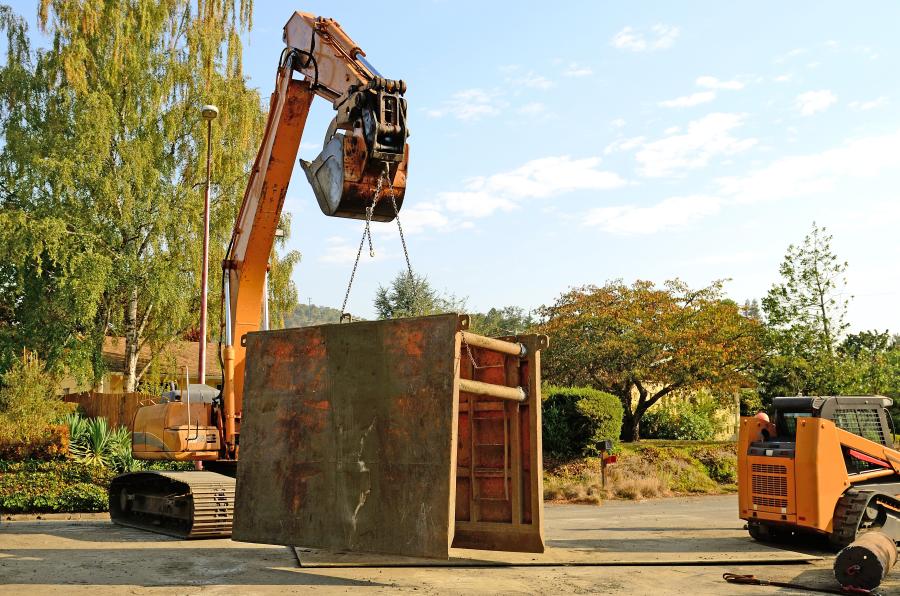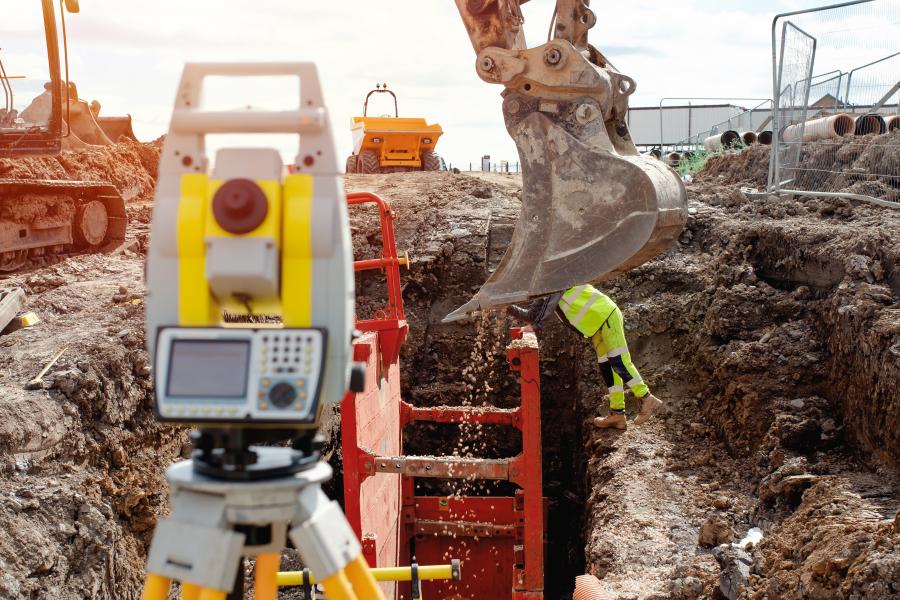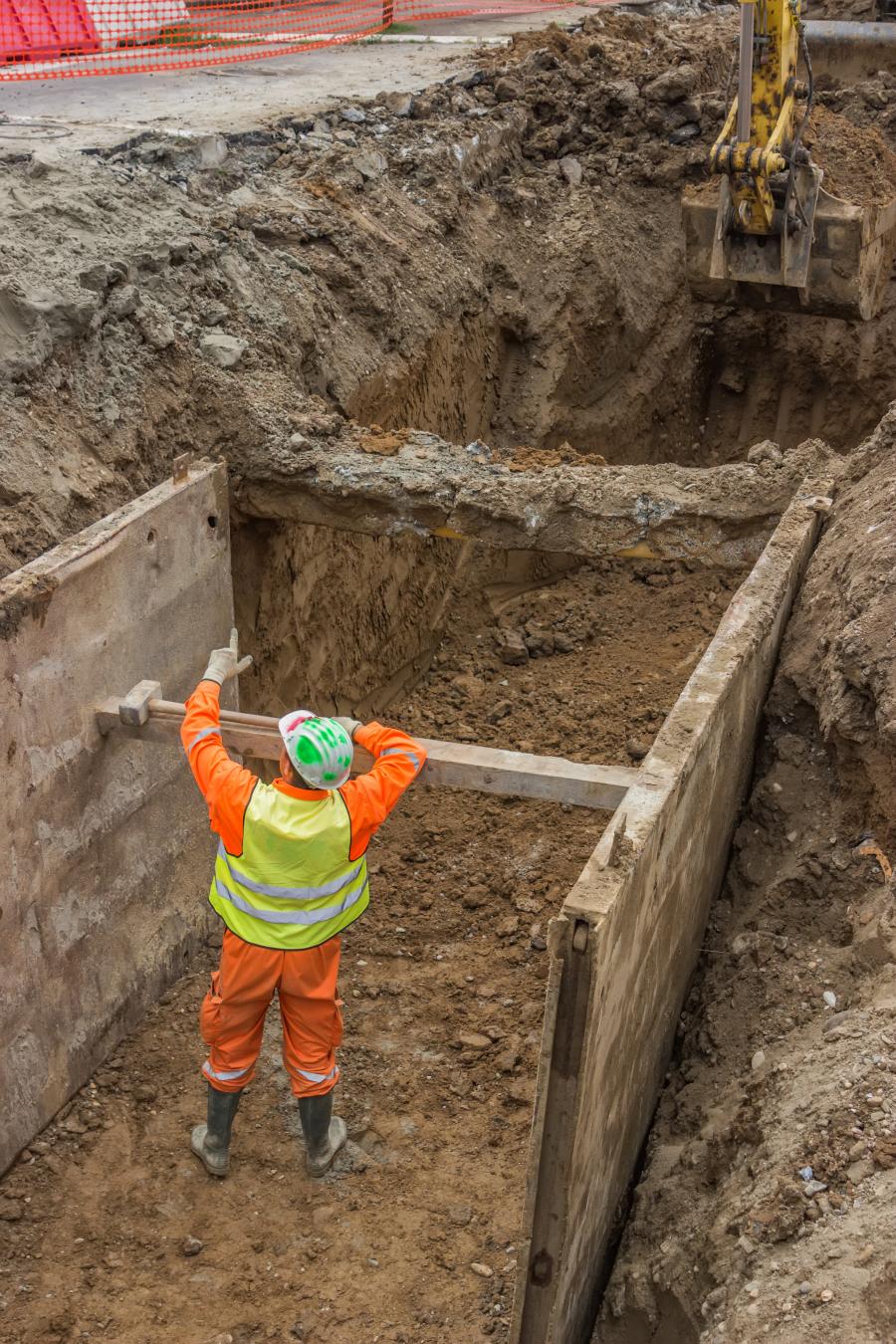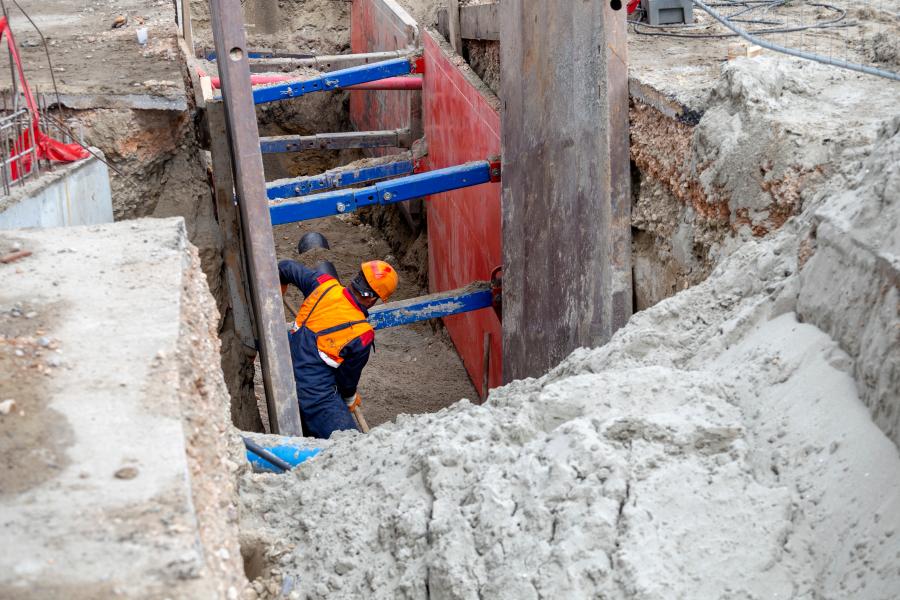In June, approximately 23,000 workers employed by 345 companies on 1,978 job sites participated in a stand down training event.
After charting an alarming 22 trenching deaths the first half of this year, OSHA has made trench safety a national emphasis on inspections. In July, the agency announced it was launching enhanced enforcement initiatives with a goal of protecting workers from known hazards. Industry professional associations support the move.
OSHA called on all employers engaged in trenching and excavation activities to act immediately "to ensure that required protections are fully in place every single time their employees step down into or work near a trench."
Doug Parker, assistant secretary for occupational safety and health, said in a matter of seconds workers can be buried under thousands of pounds of soil and rocks in an unsafe trench.
He wants to see the increase in the number of workers needlessly dying and suffering serious injuries in trenching incidents stopped.
"Every one of these tragedies could have been prevented had employers complied with OSHA standards," said Parker. "There simply is no excuse for ignoring safety requirements to prevent trench collapses and cave-ins."
The agency reported that 22 deaths in the first half of 2022 surpasses the total of 15 in 2021.
In June, two workers aged 20 and 39 died in Jarrell, Texas, when the unprotected trench more than 20 ft. deep collapsed upon them as they worked.
OSHA noted that trench shields sat unused beside the excavation. This incident prompted the agency to announce the enhancements.
To stress the dangers of disregarding federal workplace safety requirements, OSHA enforcement staff will consider every available tool at the agency's disposal, said the agency.
"These actions will place additional emphasis on how agency officials evaluate penalties, including criminal referrals for federal or state prosecution to hold employers and others accountable."
OSHA compliance officers will perform trench inspections nationwide and may stop by and inspect any excavation site during their daily duties.
Industry Gives Its Blessing
The National Utility Contractors Association (NUCA) marked this year's Trench Safety Stand Down by reinforcing the idea that safety training is key to an employee's daily activity.
The association believes safety training also is critical to a well-functioning utility construction job site.
"Time and time again, evidence shows that the key to significantly reducing the risks associated with our industry is employee training and reinforcement," said Mike Flowers, NUCA's director for safety, training and education.
This year, according to the association, 23,000 workers employed by 345 companies on 1,978 job sites participated in a stand down training event the week of June 20 to 24.
The goal of the event is to provide those who work in and around trenches and excavations with information about current excavation requirements and safety procedures.
OSHA and the North American Excavation Shoring Association (NAXSA) joined forces to host the Colorado Trench Safety Summit in early October.
The free event included classroom training, roundtable discussions and live demonstrations.
A similar event took place in Southlake, Texas, with the North Texas NUCA chapter in September.
Early this year, ANSI announced approval of the updated A10.12 excavation safety standard, Safety Requirements for Excavation.
The standard details how to design an excavation plan, including responsibilities, training and duties, assessing underground utilities, water accumulation and stability of adjacent structures and protecting workers from falls, cave-ins and confined spaces.
It applies to all open excavations, including trenches, made in the earth's surface that require worker and/or property protection.
Defining Trench Safety
NUCA reported that OSHA's standard 1926.650, Subpart P on trenching and excavation requires protective systems for trenches that are 5 ft. or deeper.
The federal agency warns that trench collapses are rarely survivable because a cubic yard of soil can weigh as much as 3,000 lbs.
"Trench hazards are well-known," said OSHA, "yet far too many workers continue to be injured or killed during excavation work."
The agency believes trench collapses, or cave-ins, are more likely than other excavation-related incidents to result in worker fatalities.
"It only takes seconds to become buried in thousands of pounds of soil."
But trench hazards can be controlled when employers act responsibly, train employees and follow federal standards.
OSHA lists steps contractors can take to keep excavation work safe:
- Ensure there is a safe way to enter and exit the trench;
- Trenches must have cave-in protection — remember to Slope, Shore, Shield;
- Keep materials away from the edge of the trench;
- Look for standing water or other environmental hazards; and
- Never enter a trench unless it is properly inspected
The National Institute of Occupational Safety and Health (NIOSH) warns that working in an unprotected trench is dangerous.
The walls can collapse suddenly and without warning. When this happens, workers do not have time to move out of the way.
"A small amount of dirt may not seem dangerous, but can weigh more than 3,000 pounds — the weight of a compact car," said the organization. "This small amount of dirt is enough to fatally crush and suffocate workers."
Like OSHA, safety experts at NIOSH warn that "workers should never enter a trench that does not have a protective system in place."
The protective system should be designed and installed by a competent person, someone who can identify hazards and is authorized to correct them.
Competent person training is available from many sources, noted NIOSH, including insurance companies, trade associations, labor unions and equipment manufacturers.
The best way to prevent trench collapse and trenching fatalities is to use other methods, when possible, said NIOSH.
Some options include directional boring, relining the pipe, pipe ramming and utility tunneling and pipe jacking.
Robots can be used on construction sites to transport, line and join large pipes to protect workers from serious injuries.
Robots may also reduce the need for pipe layers and other helpers to work at the bottom of the trench, according to the organization.
Trenches must be inspected by a knowledgeable person, be free of standing water and atmospheric hazards and have a safe means of entering and exiting prior to allowing a worker to enter.
"OSHA stands ready to assist any employer who needs help to comply with our trenching and excavation requirements," Assistant Secretary Parker added. "We will conduct outreach programs in all of our 10 regions to help ensure any employer who wants assistance gets it. The stakes are too important."
In fact, OSHA's On-Site Consultation Program for small- and medium-sized businesses will help address trench-related illnesses and injuries in workplaces.
The agency also urges workers to contact their local OSHA or state plan office if their employer requires working in or beside trenches that are not sloped, shored or shielded, and are 5 or more feet deep.
Additional Advice
Caterpillar dealer Blanchard Machinery warns that the fatality rate for excavating is 112 percent higher than general construction.
"Trenching is a dangerous job," said the West Columbia, S.C.-based, company. "But you can protect yourself and your team from injury with the right precautions. Anticipate the risks before they become hazards and be proactive with these trench safety tips."
- Understand proper trenching practices
Blanchard reinterates that the site manager should implement trenching techniques based on soil, trench dimensions and other site-specific factors.
"Never work in a trench without supporting the sides with a trench box, shoring, or combination of sloping and benching methods," said Blanchard.
- Follow site-specific trenching safety guidelines
Every work site is different, noted the company.
"Account for environmental and atmospheric conditions, soil type, trench dimensions and the work you're doing in creating site-specific safety guidelines."
According to Blanchard, these rules should be safety standards across all trench settings. Never enter a trench with standing water or accumulating water without taking proper precautions to drain and prevent more flow. Workers should not work underneath suspended loads handled by heavy machinery. All trenches require safe and separate entry and exit points.
Minimize the chance of falling debris and struck-by injuries by keeping materials and equipment at least 2 ft. away from the trench edge and using retaining devices as needed.
Always stay aware of your surroundings and implement visual and audible warning systems like signs and alarms to know when equipment is in use or nearby.
- Test and inspect trenches regularly
Trenches must be inspected before work begins each day to check for hazardous fumes, oxygen levels, water accumulation and environmental changes.
The inspector should reinspect trenches after environmental changes and natural events, like nearby blasting work or heavy rain.
- Know the soil and environment
Soil type and quality are some of the most significant factors to consider when designing a trench.
Always conduct utility line tests before trenching. Mark gas, electrical, water and other lines with correct signage and barriers before operating any equipment.
"Failure to do so could result in injury and costly damage or fees," warns Blanchard.
Plus, a competent person should conduct atmospheric testing in all trenches 4 ft. or deeper to ensure proper oxygen levels. Also, sites should have emergency rescue equipment available at all times, according to the Cat dealer.
- Use a trench box — but don't rely on it
Trench boxes are in place to protect workers in the event of a cave-in and cannot always prevent the cave-in itself.
Proper barrier placement should include shoring and worker barriers with enough force to be greater than the force coming from the trench walls.
Avoid using trench boxes for greater depths than the manufacturer has rated them for and never work inside a damaged barrier. CEG
Lucy Perry
Lucy Perry has 30 years of experience covering the U.S. construction industry. She has served as Editor of paving and lifting magazines, and has created content for many national and international construction trade publications. A native of Baton Rouge, Louisiana, she has a Journalism degree from Louisiana State University, and is an avid fan of all LSU sports. She resides in Kansas City, Missouri, with her husband, who has turned her into a major fan of the NFL Kansas City Chiefs. When she's not chasing after Lucy, their dachshund, Lucy likes to create mixed-media art.
Read more from Lucy Perry here.
Today's top stories


















